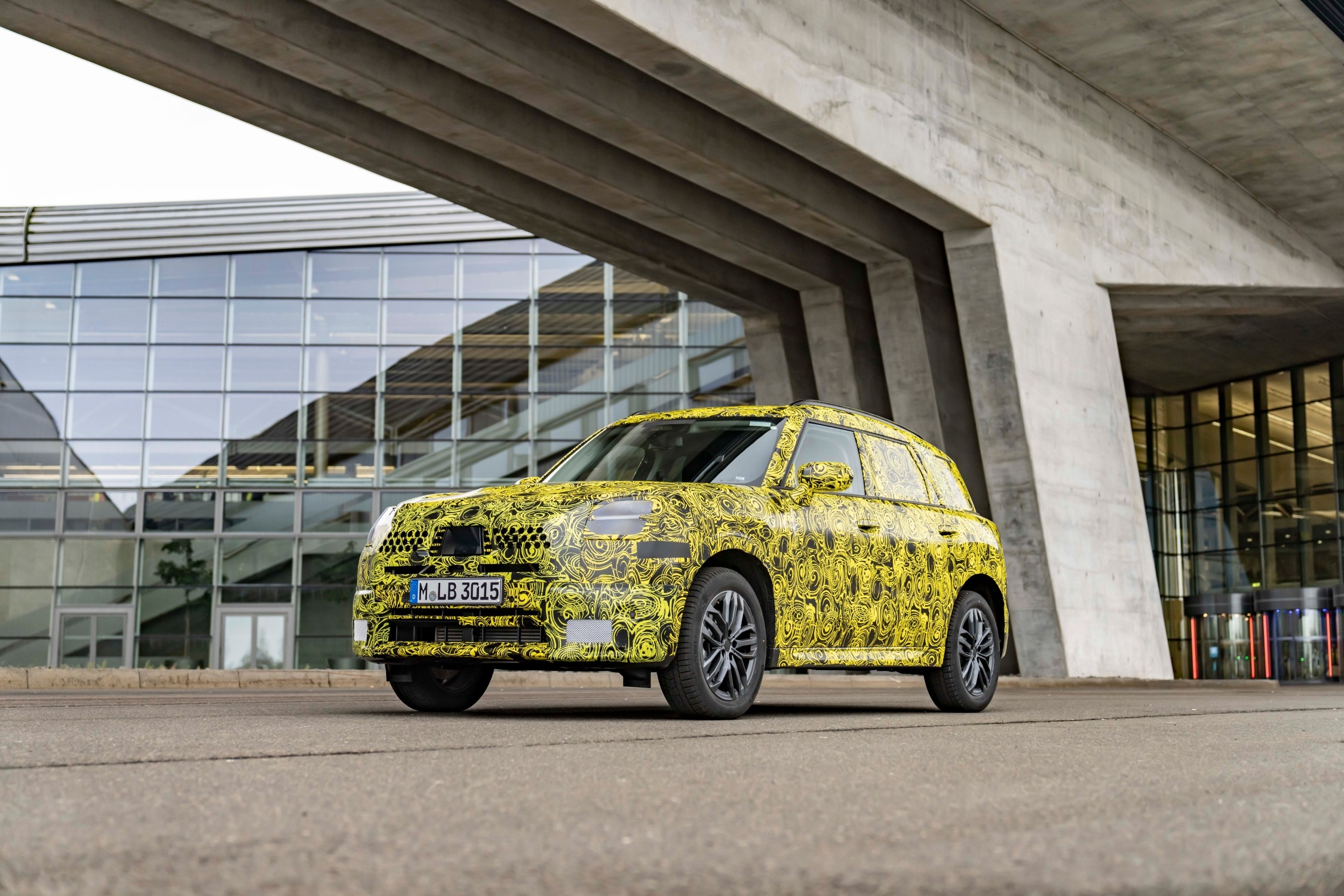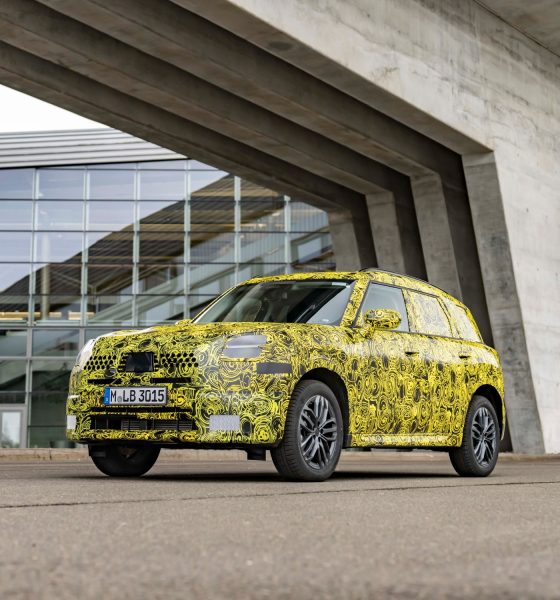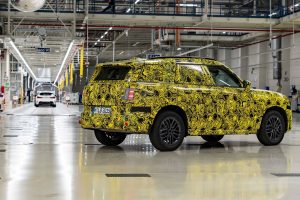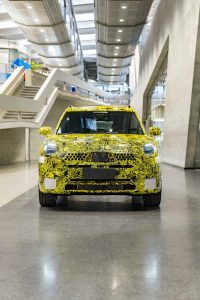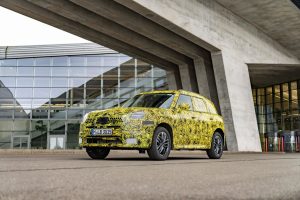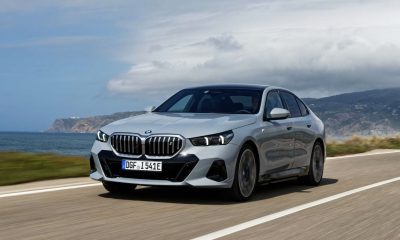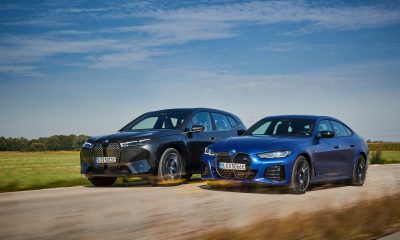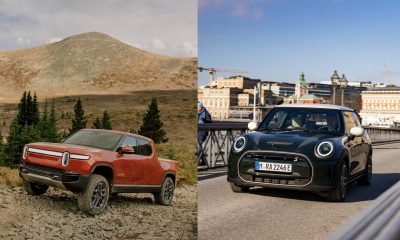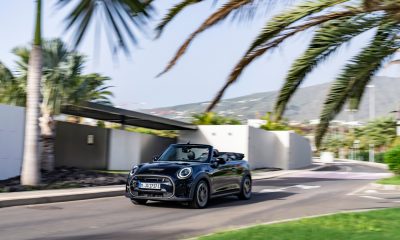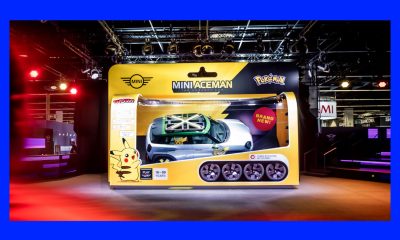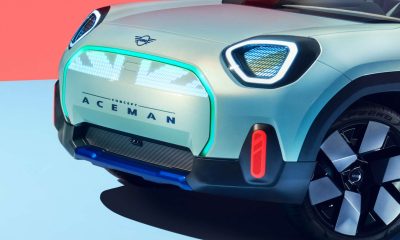MINI has announced that it will reveal three new EVs over the next 12 months.
MINI has gathered a cult following in the EV market following the introduction of its first EV, the MINI Cooper SE. This vehicle’s success has even garnered awards from KBB, which found that MINI had some of the most satisfied customers in the industry. The brand will reveal its set of three new EVs over the coming 12 months, according to Autocar.
MINI will launch three EVs, including the next-generation Cooper, the all-new Aceman electric crossover, and the slightly larger Countryman EV SUV.
The first launch will be the first generation electric Countryman in February of next year. Set to take on the Tesla Model Y, albeit in a slightly smaller form factor; the electric Countryman will be MINI’s first electric SUV. This will be followed up by the somewhat smaller 4-door MINI Aceman, which will be revealed in the coming year but will be launched at the beginning of 2025. Finally, the ever-popular next-generation MINI Cooper will also receive its next iteration within the next 12 months, though the brand was tight-lipped about a specific release date.
Each of these models will contribute to MINI’s goal of selling 50% EVs globally by 2025, up from only 15% of sales now.
MINI showed off some of its most detailed images of the electric Countryman since the vehicle was rumored to be in testing last year.
Unline the Countryman and the Aceman; MINI has released some specifications for the upcoming second-generation electric Cooper. Built on the all-new “Spotlight” EV platform, the MINI Cooper electric will come with two battery options, 40 kWh or 54 kWh, and two motor options, a 181 horsepower, and a 215 horsepower option. MINI has not specified the max range of the larger battery but has noted that the vehicle will have a minimum range of roughly 240 miles.
Sadly, the MINI Cooper electric, along with its boost in performance, will also see a slight bump in price. According to MINI executives, the Cooper electric will start just north of 30,000 pounds ($35,567) in its home market of England, up from its current starting price of just 29,000 pounds.
Perhaps more frustrating for American buys, none of the models will qualify for federal EV incentives as none will be assembled in the United States. The Countryman and Aceman will be produced in facilities in Germany, while the Cooper electric has shifted production from Oxford, England, to China.
While the price bump will certainly dampen demand for the vehicles, at least in the United States, the added capabilities of the vehicles make them considerably more attractive compared to the first-generation offering from the brand. And with the promise of keeping MINI’s “go-cart” feeling, any of these upcoming offerings may be attractive for those looking for an engaging mid-price point vehicle.
What do you think of the article? Do you have any comments, questions, or concerns? Shoot me an email at william@teslarati.com. You can also reach me on Twitter @WilliamWritin. If you have news tips, email us at tips@teslarati.com!
News
Tesla sends clear message to Waymo with latest Austin Robotaxi move
It is the first expansion Tesla has made in Austin since the one on August 26. The company still operates in the Bay Area of California as well, referring to that program specifically as a “ride-hailing service.”

Tesla has sent a clear message to Waymo with its latest move to its Robotaxi program in Austin, Texas.
Tesla and Waymo are the two true leaders in autonomous ride-hailing to an extent. Tesla has what many believe is a lot of potential due to its prowess with the Supervised Full Self-Driving suite. It is also operating a driverless Robotaxi service in Austin with a “Safety Monitor” that sits in the passenger’s seat.
Tesla explains why Robotaxis now have safety monitors in the driver’s seat
The two companies have been competing heavily in the market since they both launched driverless ride-hailing services in Austin this year: Waymo’s in March and Tesla’s in June.
One of the main drivers in the competition between the two is service area size, or the geofence in which the cars will operate without a driver. In August, the two were tied with a service area of about 90 square miles (233.099 sq. km).
Tesla then expanded to about 170 square miles (440.298 sq. km) on August 26, dwarfing Waymo’s service area and expanding to freeways. Tesla’s freeway operation of the Robotaxi suite requires the Safety Monitor to be in the driver’s seat for safety reasons.
On Tuesday evening, Tesla made another move that sent a clear message to Waymo, as it expanded once again, this time to 243 square miles (629.367 sq. km).
This is according to Robotracker:
Here’s a comparison of Tesla’s geofence in Austin vs. Waymo’s
Tesla’s now spans 243 square miles, almost three times the size of Waymo’s at 89 square miles https://t.co/OCAHQDQhzb pic.twitter.com/wq5bHQXCp4
— TESLARATI (@Teslarati) October 29, 2025
It is the first expansion Tesla has made in Austin since the one on August 26. The company still operates in the Bay Area of California as well, referring to that program specifically as a “ride-hailing service.”
Yesterday, it expanded that service to the San Jose Mineta International Airport, something it has been working on for several months.
Waymo has its own set of distinct advantages over Tesla as well, as it operates in more cities and states than the EV maker. Waymo currently has its autonomous vehicle services in Phoenix, Arizona, San Francisco, Los Angeles, Austin, and Atlanta, Georgia.
Tesla plans to have half of the U.S. population with access to the Robotaxi platform by the end of the year.
News
Tesla exec reveals shock development with Cybercab
“If we have to have a steering wheel, it can have a steering wheel and pedals.”
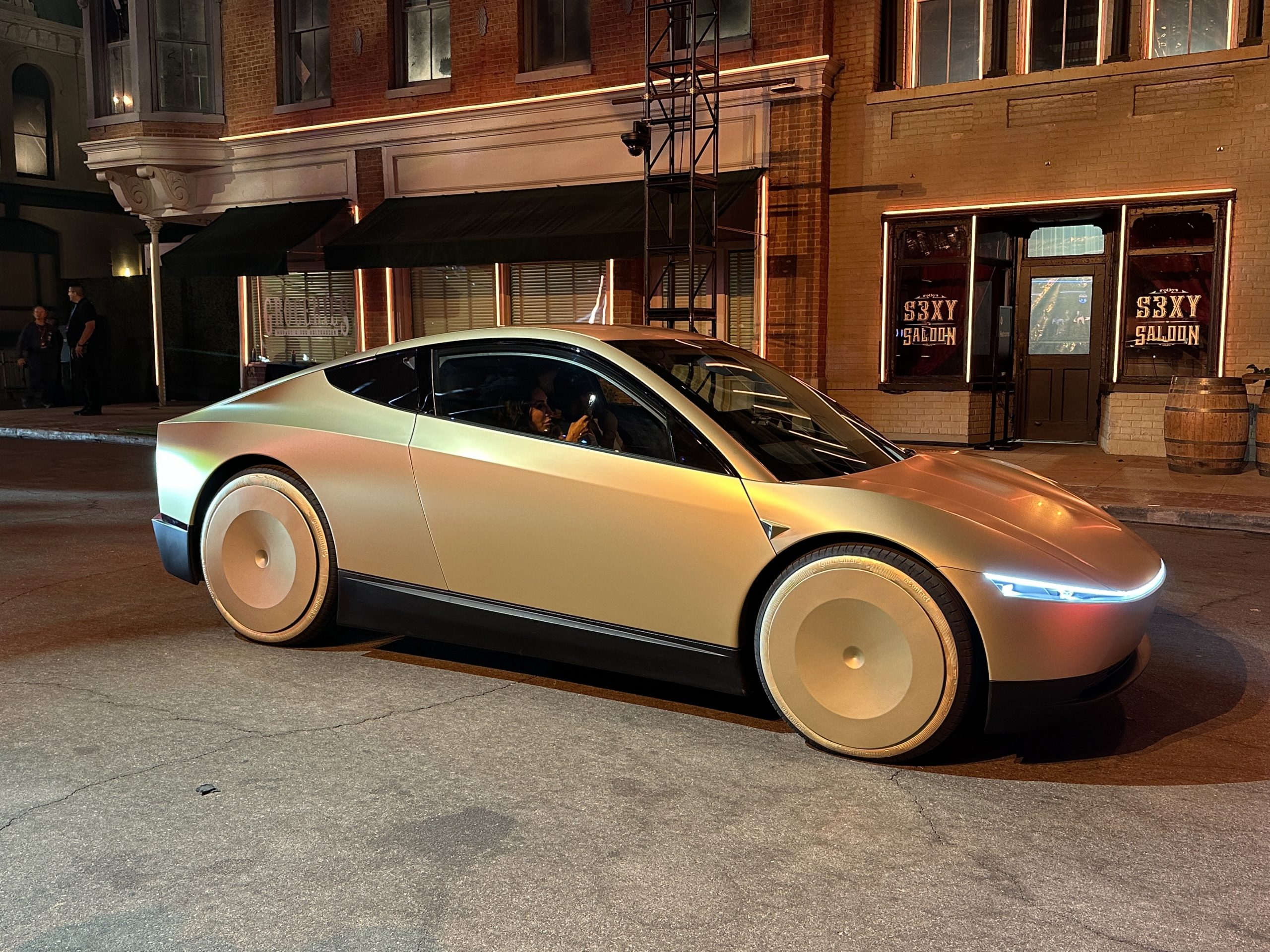
Tesla is planning to launch the Cybercab in the second quarter of next year, and it is designed to be fully autonomous, so much so that the company is planning to build it without a steering wheel or pedals.
However, a Tesla executive said today that the company could ditch that idea altogether in what would be a major shift from the plans the company, and especially its CEO Elon Musk, have announced for the Cybercab.
Earlier today, Robyn Denholm, the company’s Chair for the Board of Directors, revealed that Tesla would potentially switch up its plans for the Cybercab based on potential regulatory requirements.
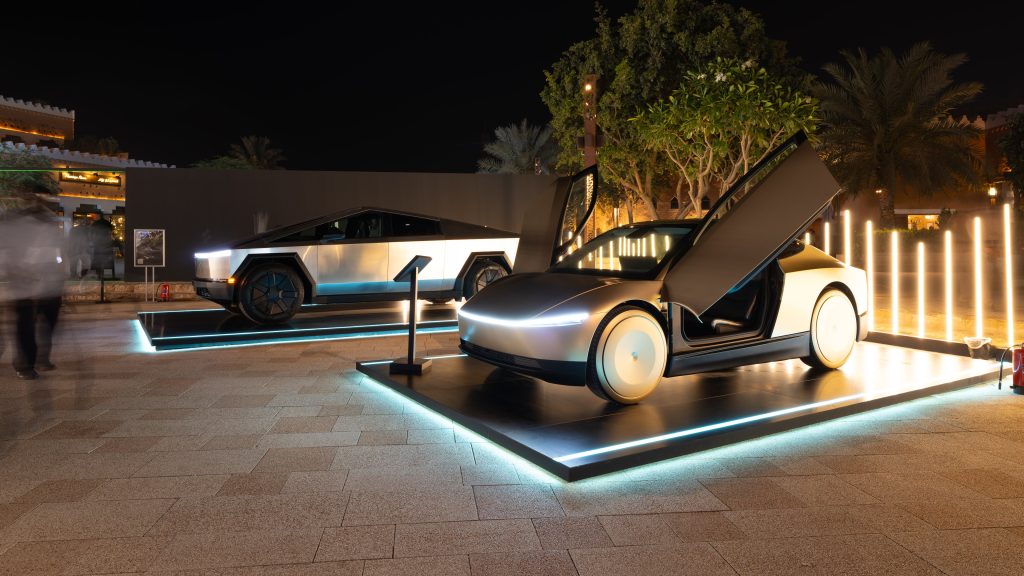
Credit: Tesla Europe & Middle East | X
Currently, even autonomous vehicles that operate for companies like Tesla and Waymo are required to have steering wheels and pedals. From a regulatory perspective, this could halt the plans Tesla has for Cybercab.
Denholm said in an interview with Bloomberg:
“If we have to have a steering wheel, it can have a steering wheel and pedals.”
Interestingly, Musk and Tesla have not veered away from the idea that the vehicle will be without these operational must-haves.
Since the vehicle was revealed last October at the We, Robot event in Los Angeles, Tesla has maintained that the car would be built without a steering wheel or pedals, and would equip two seats, which is what is statistically most popular in ride-sharing, as the vast majority of rides have only one or two passengers.
Musk doubled down on the plans for Cybercab as recently as last week, when he said:
“That’s really a vehicle that’s optimized for full autonomy. It, in fact, does not have a steering wheel or pedals and is really an enduring optimization on minimizing cost per mile for fully considered cost per mile of operation. For our other vehicles, they still have a little bit of the horse carriage thing going on where, obviously, if you’ve got steering wheels and pedals and you’re designing a car that people might want to go very direct past acceleration and tight cornering, like high-performance cars, then you’re going to design a different car than one that is optimized for a comfortable ride and doesn’t expect to go past sort of 85 or 90 miles an hour.”
Cybercab is fully conceptualized as a vehicle that has zero need for pedals or a steering wheel because it is aimed toward being fully reliant on a Level 5 autonomous platform.
Tesla is ramping its hiring for Cybercab vehicle manufacturing roles
Regulators could get in the way of this, however, and although the car could drive itself and be a great solution for ride-hailing, it might need to have these controls to hit the road in the future.
News
SpaceX opens up free Starlink service for those impacted by Hurricane Melissa
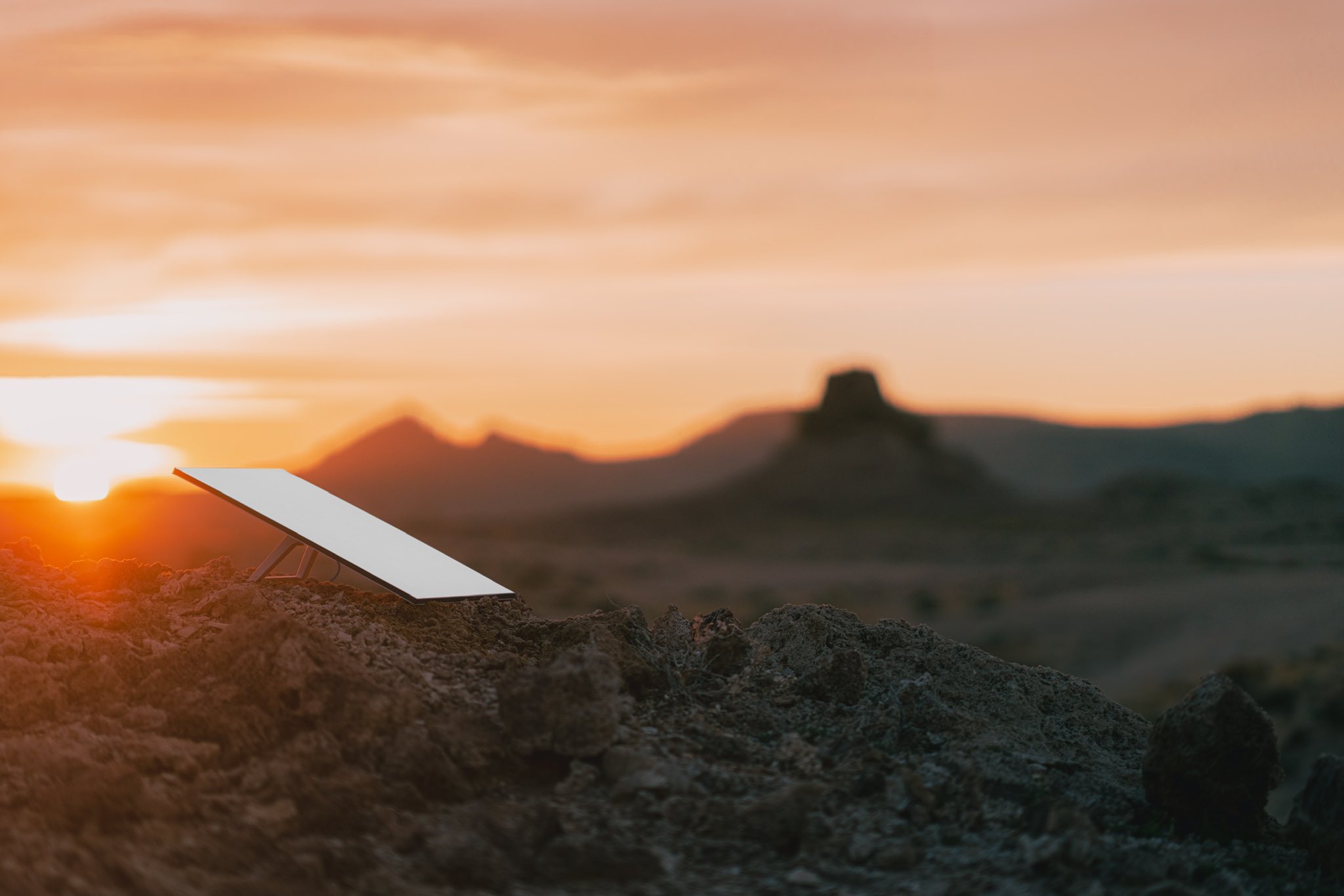
SpaceX is opening up its internet service, Starlink, to those impacted by Hurricane Melissa, as it made landfall in Jamaica and the Bahamas as a Category 5 storm.
Hurricane Melissa is expected to reach wind speeds of over 165 MPH over the next few days as it extends out into the Atlantic Ocean by Thursday and Friday.
Satellite imagery shows Hurricane #Melissa‘s growth from its formation on October 21 to a Category 5 hurricane through October 27, 2025. #HurricaneMelissa pic.twitter.com/goR3Hbgb9c
— The Weather Network (@weathernetwork) October 27, 2025
Citizens in Jamaica and the Bahamas have been preparing for the storm for the past week, getting necessary goods together and preparing for the massive storm to arrive. It finally did yesterday, and the first images and video of the storm are showing that it could destroy many parts of both countries.
Starlink is now being opened up for free until the end of November for those impacted by the storm in Jamaica and the Bahamas, SpaceX announced today:
For those impacted by Hurricane Melissa in Jamaica and the Bahamas, Starlink service is now free through the end of November to help with response and recovery efforts → https://t.co/fUko3xSviJ
— Starlink (@Starlink) October 28, 2025
It is a move similar to the one the company made last year as Hurricane Helene made its way through the United States, destroying homes and property across the East Coast. SpaceX offered free service for those impacted by the destruction caused by the storm.
The free Starlink service was available until the end of 2024.
Elon Musk’s companies have also made similar moves to help out those who are impacted by natural disasters. Tesla has offered Free Supercharging in the past, most notably during the California wildfires.
Tesla and SpaceX’s LA fire relief efforts: Cybertrucks, free Starlink and more
One major advantage of Starlink is that it is available for use in situations like this one, where power might be required to operate things like a modem and router.
Internet access is a crucial part of survival in these situations, especially as it can be the last leg some stand on to get in touch with emergency services or loved ones.
-

 Elon Musk2 weeks ago
Elon Musk2 weeks agoSpaceX posts Starship booster feat that’s so nutty, it doesn’t even look real
-

 Elon Musk2 weeks ago
Elon Musk2 weeks agoTesla Full Self-Driving gets an offer to be insured for ‘almost free’
-

 News2 weeks ago
News2 weeks agoElon Musk confirms Tesla FSD V14.2 will see widespread rollout
-

 News2 weeks ago
News2 weeks agoTesla is adding an interesting feature to its centerscreen in a coming update
-

 News2 weeks ago
News2 weeks agoTesla launches new interior option for Model Y
-

 News2 weeks ago
News2 weeks agoTesla widens rollout of new Full Self-Driving suite to more owners
-

 Elon Musk2 weeks ago
Elon Musk2 weeks agoTesla CEO Elon Musk’s $1 trillion pay package hits first adversity from proxy firm
-

 News1 week ago
News1 week agoTesla might be doing away with a long-included feature with its vehicles

